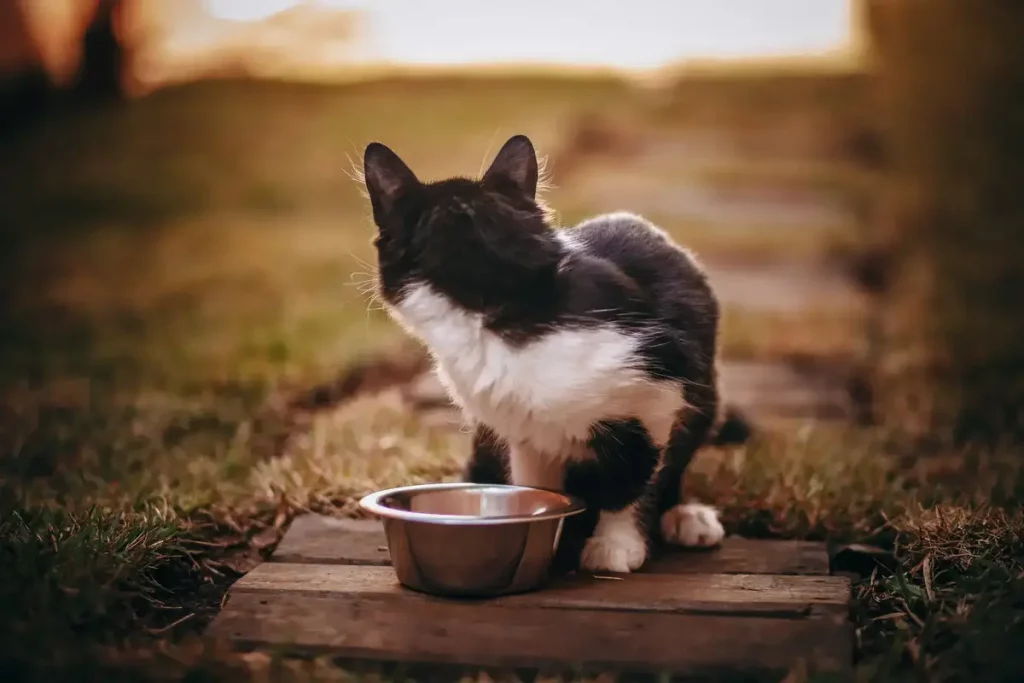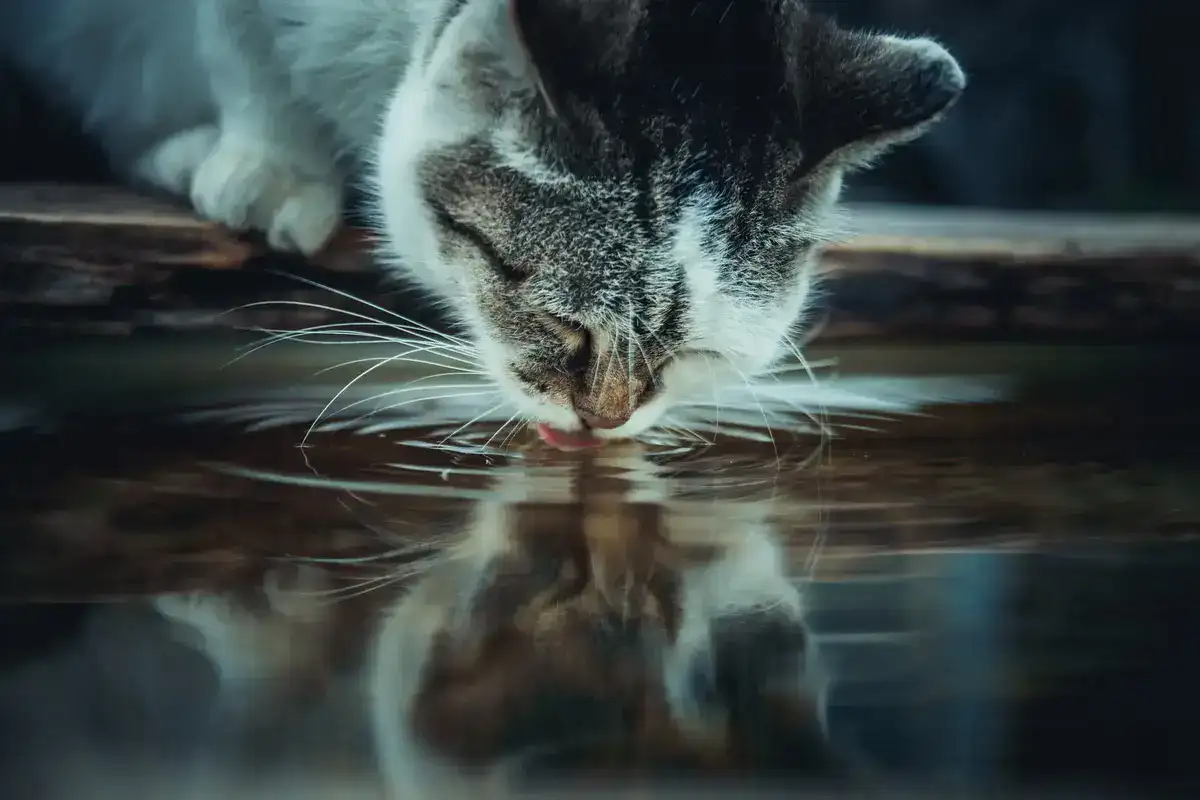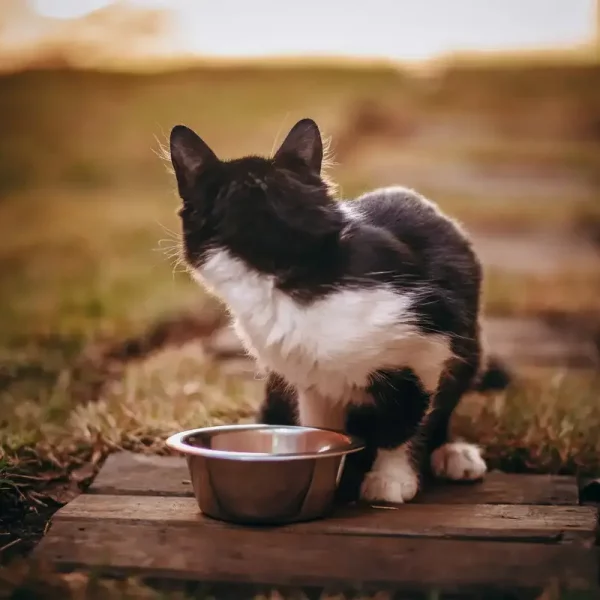Rabies is one of those frightening diseases that has many misconceptions and a lot of misinformation. Being one of those diseases about which there are a lot of myths, many cat owners will unnecessarily worry about things; for example, whether cats can get rabies from drinking water.
In this short guide I will explain what the risks of a contaminated water source is to your cat, whether rabies can be transmitted through drinking bowls, and through water between cat and even humans.
Handy Hint: If your cat is drinking blue toilet water, read this guide to learn more about the effects this has on your cat and what you can do to encourage her to not drink blue toilet water.

First let’s start with the short answer about cats getting rabies from sharing water. Then I will go into detail on the why, hopefully dispelling some of those myths for you.
Can cats get rabies from drinking water? It is very unlikely for cats to catch rabies from sharing drinking water for a number of reasons, the main one being that rabies can only live for a couple of hours in water. Rabies is also mostly contracted via an animal bite, not through drinking water.
According to an academic paper I found online, here’s the answer to a question about rabies being spread through water:
“Rabies not does survive very long after being produced and shed through the infected animal’s saliva. The virus begins to quickly degrade after being produced and survives for up to only 2 hours in saliva or water. It dies quickly after it is dried out or exposed to direct sunlight. So, although rabies can essentially survive in water, it is only for a brief time.”
Why it’s unlikely your cat will get rabies from water
To expand on the short answer above we need to examine a few facts about rabies. All of the information presented below I have gathered and collated from authoritative sources such as the Centers for Disease Control and Prevention (CDC) and the World Health Organization (WHO).
- Rabies cannot survive long outside the body: Reports I have read state that rabies can only live outside of the host’s body in water for between 2 and 24 hours.
- Rabies is short-lived in the open air: Rabies can only live outside of the body for a couple of seconds, meaning if it goes through the air and drops into water then it’s unlikely to survive.
- Rabies is almost always transmitted by bites: The majority of rabies cases occur when a rabid animal bites a cat, with the rabies being transmitted via saliva into the wound then the bloodstream.
- Rabies only survives in dead animals for 48 hours: And even that is a stretch, as rabies will quickly die off once the host dies and their saliva dries up. Based on this it’s unlikely to contaminate a water source cats are drinking from.
- Rabies is rare in the English-speaking world: The disease has virtually been eliminated in the UK and Australia, with hardly any cases reported annually in the United States and Canada.
Can cats get rabies from sharing water?
As with all the scenarios in this guide, it’s extremely unlikely that your cat will get rabies from sharing water. In order for your cat to get rabies from a shared water source a number of factors would need to align, and even then, it would be a slim risk.
- The infected cat would need be in the shedding period when the virus is active in their saliva (which is usually 4 to 5 days before they develop symptoms).
- The saliva from the infected would then need to get into the water before the rabies virus died outside the body (usually a couple of seconds).
- The potential host cat would then need to drink from the shared water in a short time period and the if the saliva was still infected and present, would need to enter their blood stream.
There’s also the consideration that cats infected with rabies are rarely able to drink water due to painful spasms and muscle paralysis. Because of this, it’s unlikely that your cat would be sharing water with a cat infected with rabies.
Can you get rabies from water bowl?
Humans and cats are very unlikely to contract rabies from a water bowl, for many of the reasons already listed above. There’s also this great quote that I found on the website of the Commonwealth of Pennsylvania website:
“It’s possible for the rabies virus to be transmitted through water if an animal is drinking out of a water dish at the same time as another rabid animal or shortly after the rabid animal was drinking. The virus will not survive for long in water, but it will last long enough to possibly infect another animal.” (view source)
Whilst that sounds scary, you still need to take it with a pinch of salt as there are very few cats in North America with reported rabies, and in the UK and Australia the disease is virtually eliminated.
Can cats get rabies from drinking a contaminated water source?
Some cat owners might have concerns if they see a dead animal in a stream or water source, and then see their cat drinking the water.
Rabies is extremely unlikely in this situation because rabies is in an animal’s saliva, and quickly dies off when the host animal dies. Rabies is also only really transmitted via a bite, and so would need to get into your cat’s bloodstream.

Based on this, it’s almost impossible for a cat to get rabies from drinking a contaminated water source where a dead animal has been found.
Plus, rabies is very rare in the Western World and English-speaking countries (more on that in the next section).
Handy Hint: Some cat owners think that distilled water is healthier for their cat, but the truth is probably quite different.
Why rabies is unlikely where you live
In North America you can still find some animals with rabies, the most common ones being raccoons, skunks, and bats. However, feline rabies has been eliminated throughout the United States and Canada, so the chances of your cat catching rabies by drinking water contaminated by another cat is very slim.
In the UK and Australia there are virtually no instances of rabies at all, with it only being reported in certain breeds of bat, and no cases of feline rabies for many years.
Handy Hint: If your cat is drinking blue toilet water, read this guide to learn more about the effects this has on your cat and what you can do to encourage her to not drink blue toilet water.
If you were to travel abroad though, things are different. For example, there are cases of feline rabies in India due to the number of strays.
Conclusion
People often worry about their cat getting rabies, but the truth is it’s very rare. In the United States, feline rabies cases were at just 63 in 2018. Given that it’s been estimated there are 89.7 million cats in the USA, that’s just a 0.00007% rate. You have more chance of winning the lottery.
But it is an understandable concern, and so much so that I’ve written multiple guides on the subject of cats and rabies which you can browse below.



Leave a Comment